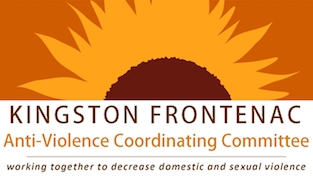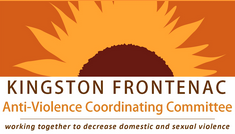
The See It. Name It. Change It! campaign empowers individuals to take action against Intimate Partner Violence (IPV) and Gender-Based Violence (GBV) in our communities. It’s all about starting conversations, learning about healthy relationships, and finding ways to make our communities safer and happier for everyone.
SEE IT: What Does Violence Look Like?
NAME IT: How Do We Call It Out?
CHANGE IT: End Violence in Our Communities!
By identifying, calling out, and challenging IPV/GBV, we can work together to stop it in our communities. Think of it like the fire safety rule we all know: Stop, Drop, and Roll. It’s simple and easy to remember.
When you SEE intimate partner or gender based violence, and NAME it by calling it out, you are already taking the first step toward CHANGE.
It’s simple. It’s powerful.
And it’s something we can all do.

SEE IT: What Does Violence Look Like?
Violence looks like many things. It is repeated and unwanted actions made against someone else in a relationship, in an effort to have power and control over the person. It can be a look, a yell, keeping a person from friends and family, physical abuse, name calling, bullying, controlling behaviour and more. When you See It, pay attention. Think about who can help, where you are, and how to say something.
Violence Can Include:
- Controlling what someone wears and making comments about it
- Keeping the person away from their friends or loved ones
- Having to be with them or to know where the person is at all times
- Damaging personal property or throwing objects at them
- Hitting, slapping, punching, kicking, scratching, pulling hair, etc.
- Refusing medical attention or keeping medication from the victim
- Pressuring or forcing a partner to use substances
- Use of weapons, including improvised objects
- Threats, including threats of suicide
- Name calling and blame
11 Types of Abuse
- Emotional/Psychological Abuse
- Physical Abuse
- Social Abuse
- Online/Digital/Technology Abuse
- Sexual Abuse
- Verbal Abuse
- Environmental Abuse
- Religious Abuse
- Financial Abuse
- Ritual Abuse
- Coercive Control

NAME IT: How Do We Call It Out?
Calling out intimate partner violence is a step towards building a safe community for everyone.
When faced with a situation where you witness behavior that makes you uncomfortable or scared, it’s essential to consider your surroundings and your relationship with the individuals involved. It’s crucial to Name the behaviour in a way that clearly communicates that it is unacceptable.
How You Can Name It
When you encounter a problematic situation, decide how you are going to respond.
Ask yourself: Is it safe and reasonable to intervene? What actions am I comfortable taking?
The 5 D’s of Bystander Intervention make it easier to choose how to respond
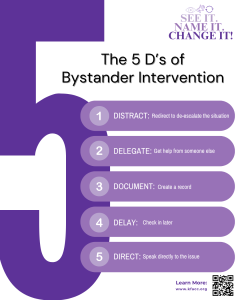
Distract either party. This can be simple. Ask for directions or pretend you know the person being harassed and start talking to them.
Delegate by bringing in someone else to help you in the situation
Document the situation by taking notes, a photo or a video of the situation. Remember, this is just for information. Never livestream or share online!
Delay your response if the situation is too dangerous. Walk away and wait for the situation to pass. Ask the victim later if they are okay or report it if it’s safe to do so. It’s never too late to act!
Direct intervention in the situation by inserting yourself into it, i.e. confront the harasser in a direct, respectful manner:
- “Hey, what’s happening?”
- “This is not cool.”
- “You need to stop”
- “That is so inappropriate”
Use this method with caution. Assess the situation as it can be risky – the person harassing may redirect their abuse towards the intervening bystander or may escalate the situation in another way. Never put yourself, or the victim, in harm’s way.
Learn More about the 5 D’s of Active Bystander Intervention

CHANGE IT: End Violence in Our Communities!
Change won’t happen overnight, but every time you call out violence you are helping to create a better community. No one has all the answers, but shifting the way we see violence is critical to creating safer communities for everyone. Learn about services, resources and how to access them in your community.
It may require multiple attempts, and unfortunately, it usually takes more than one incident, or one conversation, but once you Name It, the conversation about Changing It becomes possible.
Choice is everywhere; know what options are available, where to find IPV/GBV resources and information, and who is safe to turn to.
Some Tips for Changing It!
- Get people involved – influence in numbers
- Don’t rant, talk
- Know your limits
- Practice before talking to someone if that will help
- Ask for help
- Educate others
- Don’t talk alone if you don’t feel safe. Go with someone else and be the “someone else” for others if necessary
- Know the local resources and be prepared to share information if it’s needed
- Listening is always helpful
- Be prepared to call 911 if necessary
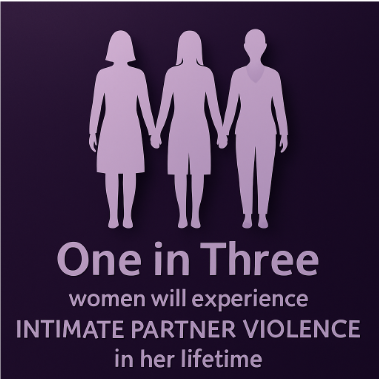
Why this Campaign is Important
- In Canada, approximately 44 per cent of women who have been in an intimate relationship – or about 6.2 million women aged 15 and older – have reported experiencing some form of psychological, physical or sexual abuse in a relationship at some point in their lives.
- In Canada, every 48 hours a woman or girl is killed by her intimate partner.
- In October 2023, Kingston City Council declared intimate partner violence as an epidemic. To date, 106 municipalities across Ontario have done the same.
- Last year, in Ontario, 62 femicides were confirmed by the Ontario Association of Interval and Transition Houses (OAITH).
- In Kingston, in 2019, the rate of victims of police-reported partner violence was 236 per 100,000, increased from 193 in 2016.

About See It. Name It. Change It!
This campaign was originally created and launched by Lanark County Interval House & Community Support (LCIHCS) in 2017 in response to seven murders in rural eastern Ontario between September 2015 and February 2016. In 2022, LCIHCS relaunched the campaign for a second time in honour of the inquest into the femicides of Carol Culleton, Anastasia Kuzyk, and Nathalie Warmerdam in Renfrew County in 2015.
In 2024, Ottawa Victim Services (OVS) launched a See It, Name It, Change It educational campaign, funded by the City of Ottawa, following the 16 Days of Activism on Gender-Based Violence in Canada.
This campaign acts as a tool to empower individuals with knowledge on recognizing the signs of IPV, naming harmful behaviours, and taking safe and effective action to create change in the community.

Community Partners for
See It. Name It. Change It! in KFL&A
Together, Kingston Interval House, Kingston Frontenac Anti-Violence Coordinating Committee, Resolve Counselling Services, South East Health Unit, the City of Kingston and United Way Kingston, Frontenac, Lennox and Addington formed a working group in 2024 to address Intimate Partner Violence (IPV) and Gender Based Violence (GBV) in our communities.
In addition to sharing resources and amplifying messaging, the group worked together and combined resources to create a See It. Name It. Change It! campaign here in KFL&A.
With the growing rate of femicides in KFL&A and beyond (the United Nations reminds us that every 10 minutes, a woman is killed around the world) the group hopes to use this campaign to decrease its prevalence and give women and gender diverse individuals impacted, the voice and the skills to take action.
Together, we can stop intimate partner violence in KFL&A.
Our Resources
See It. Name It. Change It! Community Tips for Everyone Brochure
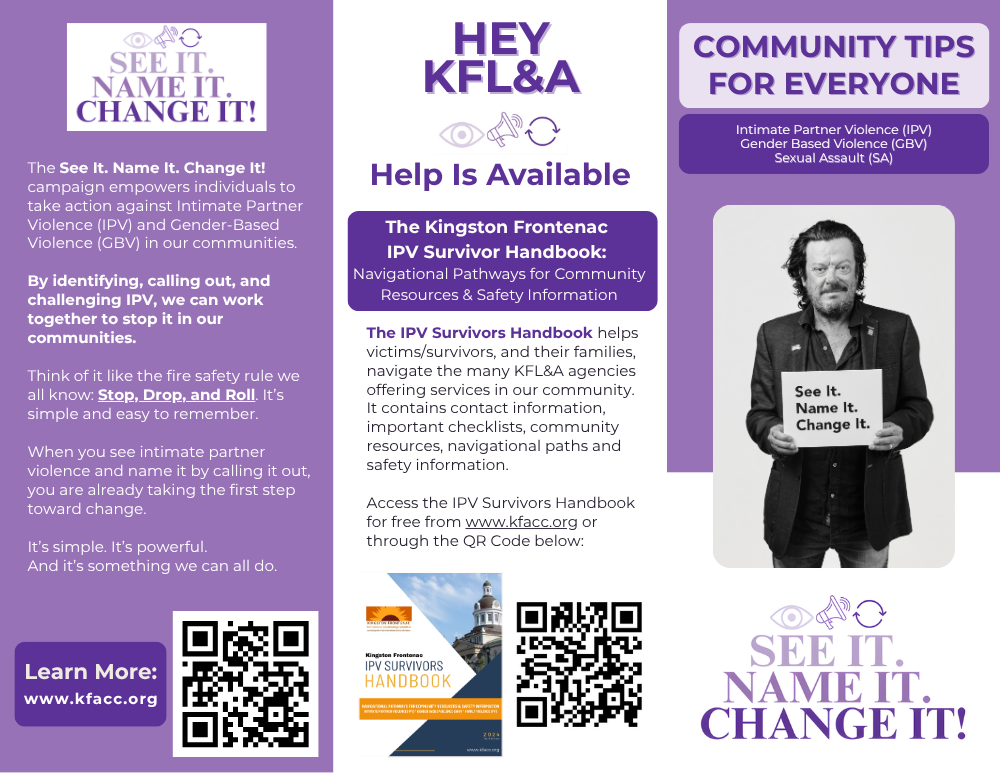
The 5 D’s of Bystander Intervention Brochure

Talking To Students About Violence: Community Tips For Educators Brochure
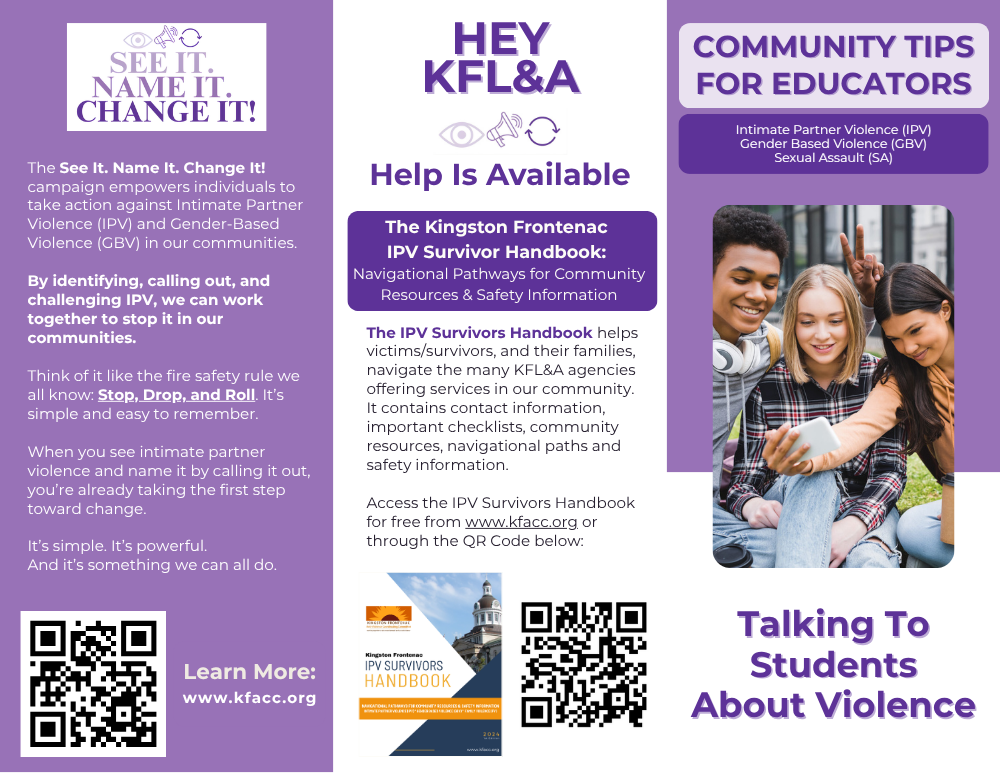
Other Resources
Bystander Intervention Webinar with Julie S. Lalonde
Breaking the Silence – How to be an active bystander
How to Be a Good Bystander, According to Science
stopthehurt.org
Help is Available
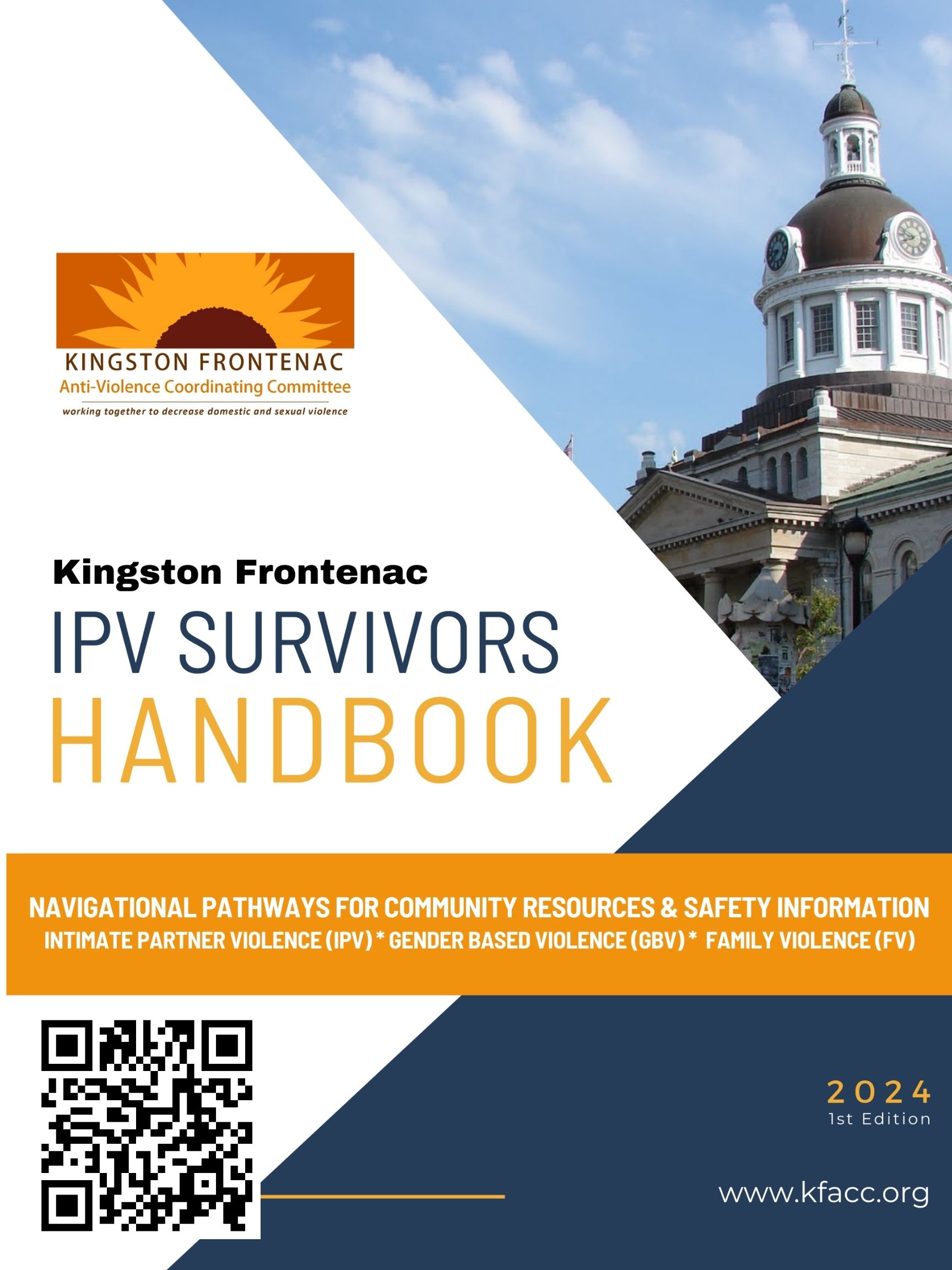
The Kingston Frontenac IPV Survivor Handbook: Navigational Pathways for Community Resources & Safety Information for Intimate Partner Violence (IPV), Gender Based Violence (GBV), and Family Violence (FV)
Access the IPV Survivors Handbook for free from www.kfacc.org.
The Kingston Frontenac Anti-Violence Coordinating Committee (KFACC) has consolidated information from the many agencies serving Victims/Survivors in our area, developing the Kingston Frontenac IPV Survivor Handbook.
The IPV Survivors Handbook helps victims/survivors, and their families, navigate the many KFL&A agencies offering services in our community. It contains contact information, important checklists, community resources, navigational paths and safety information.
The handbook will help those dealing with violence in their intimate relationships navigate the many agencies offering services and help them connect with the people and resources available in our local community so they can make informed choices about their situation.
Often people want to try other things before addressing the issue more formally through law enforcement, or leaving the relationship, and that’s okay. Any step towards nonviolent choices is a good one.
The truth is… Staying isn’t Choosing. It’s Surviving.
Leaving an abusive relationship is never simple. Survivors face fear, financial barriers, stigma, and risks to their safety and their children’s wellbeing. Abuse can take many forms – from control and manipulation to family pressure and isolation, and these are only some examples. Abuse can also involve sexual coercion, digital surveillance, threats to pets, or the misuse of culture, religion, or immigration status. While the forms may differ, every type of abuse reflects the same truth: it is always about power and control, and every survivor’s situation is unique.
Learn More About Staying isn’t Choosing and the reality Survivors face.
